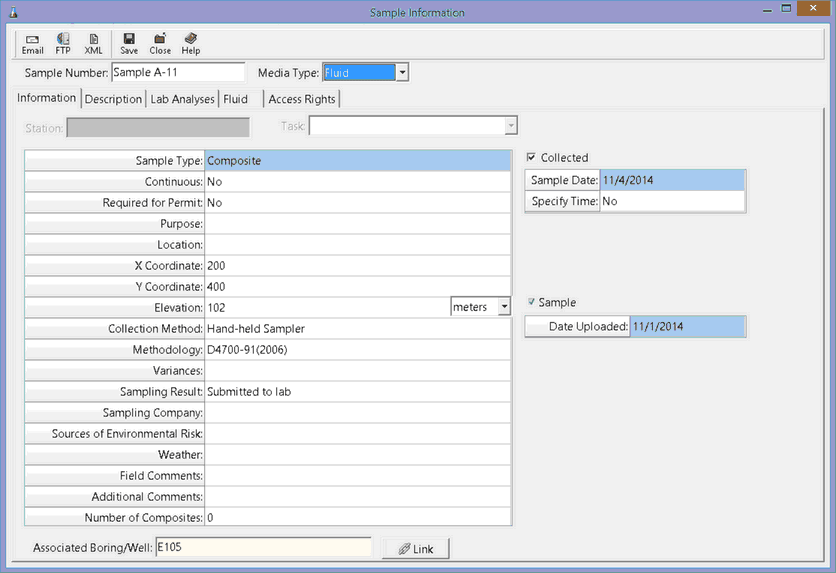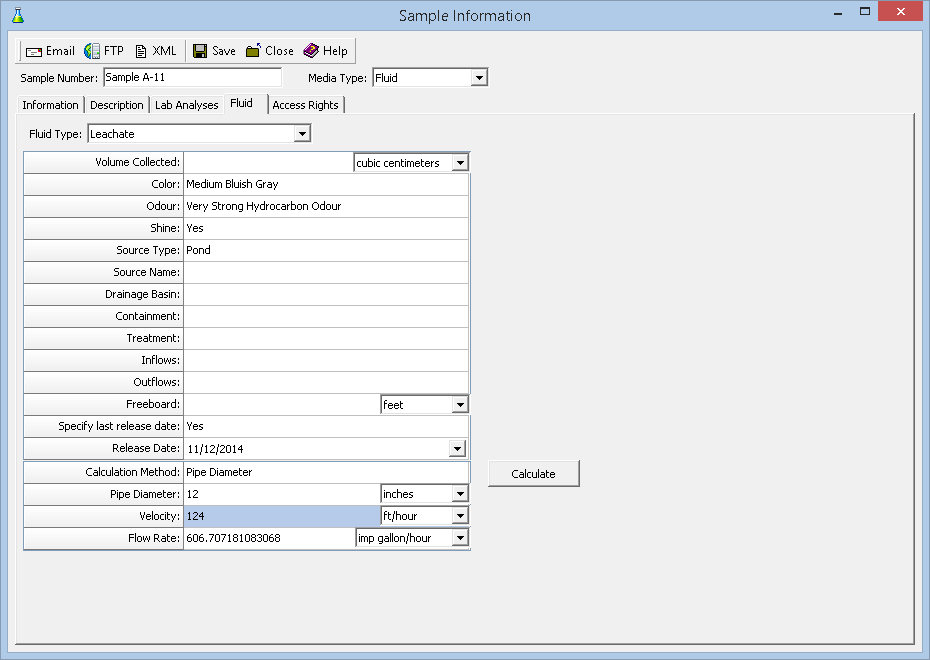|
<< Click to Display Table of Contents >> Fluid Data Tab |
  
|
|
<< Click to Display Table of Contents >> Fluid Data Tab |
  
|
The Fluid Data tab is used to specify the information that pertains to fluid media only.

The following can be specified on this tab:

Fluid Type: This is used to select the type of fluid from the list of Fluids.
Volume Collected: This is the volume of water collected for the sample and volume units.
Color: This is used to select the color from a list of Colors.
Odour: This is used to select the odour from a list of Odours.
Shine: This is used to specify if there is a shine on the water.
Source Type: This is used to select the source type from a list of Sources..
Source Name: This is used to specify the name of the source of the surface water.
Drainage Basin: This is used to specify the drainage basin of the surface water.
Containment: This is used to specify the containment of the surface water.
Treatment: This is used to specify any treatment of the surface water.
Inflows: This is used to specify any inflows.
Outflows: This is used to specify any outflows.
Freeboard: This is used to specify the freeboard and freeboard units.
Specify last release date: Select yes to specify a last release date.
Release Date: If a release date is being specified, this is used to select the release date.
Calculation Method: This is used to select the calculation method used to calculate the flow rate. .The calculation method may be either stream/ditch or pipe diameter. In addition, the flow rate can be specified manually.
Pipe Diameter: If the calculation method is pipe diameter, this is the diameter of the pipe and diameter units.
Average Width: If the calculation method is stream or ditch, this is the average width and width units.
Average Depth: If the calculation method is stream or ditch, this is the average depth and depth units.
Roughness Factor: If the calculation method is stream or ditch, this is used to specify the roughness factor. A coefficient or correction factor (0.8 for rocky-bottom streams or 0.9 for muddy-bottom streams). This allows you to correct for the fact that water at the surface travels faster than near the stream bottom due to resistance from gravel, cobble, etc. Multiplying the surface velocity by a correction coefficient decreases the value and gives a better measure of the stream's overall velocity.
Velocity: This is the flow velocity and velocity units.
Flow Rate: This is either the calculated flow rate or the manually entered flow rate and flow rate units.